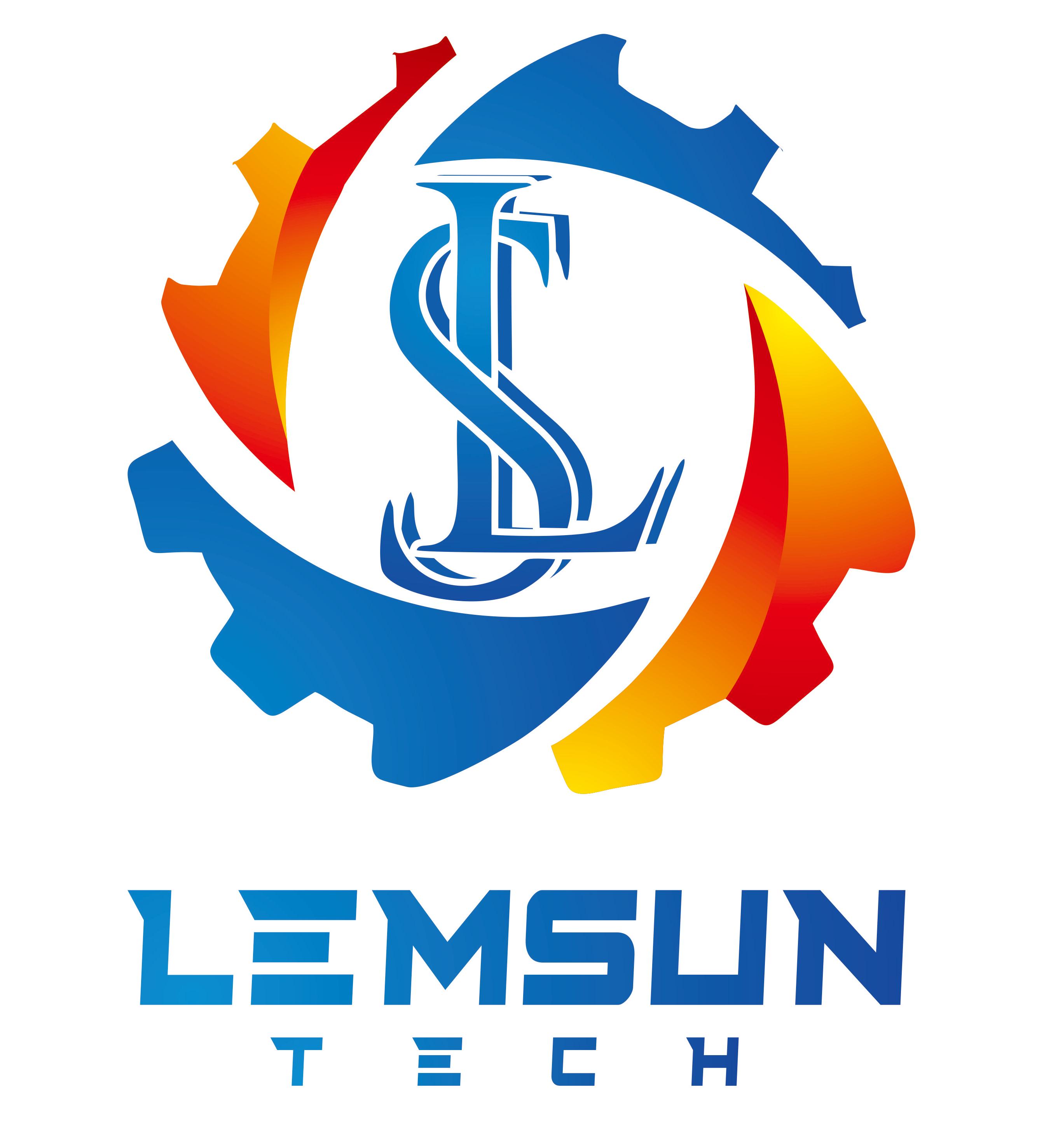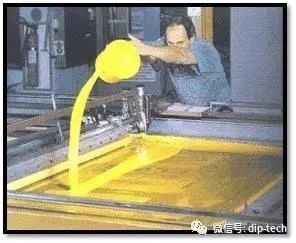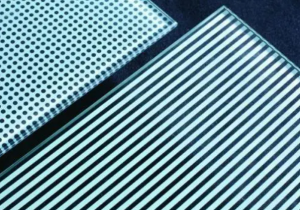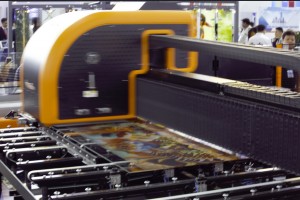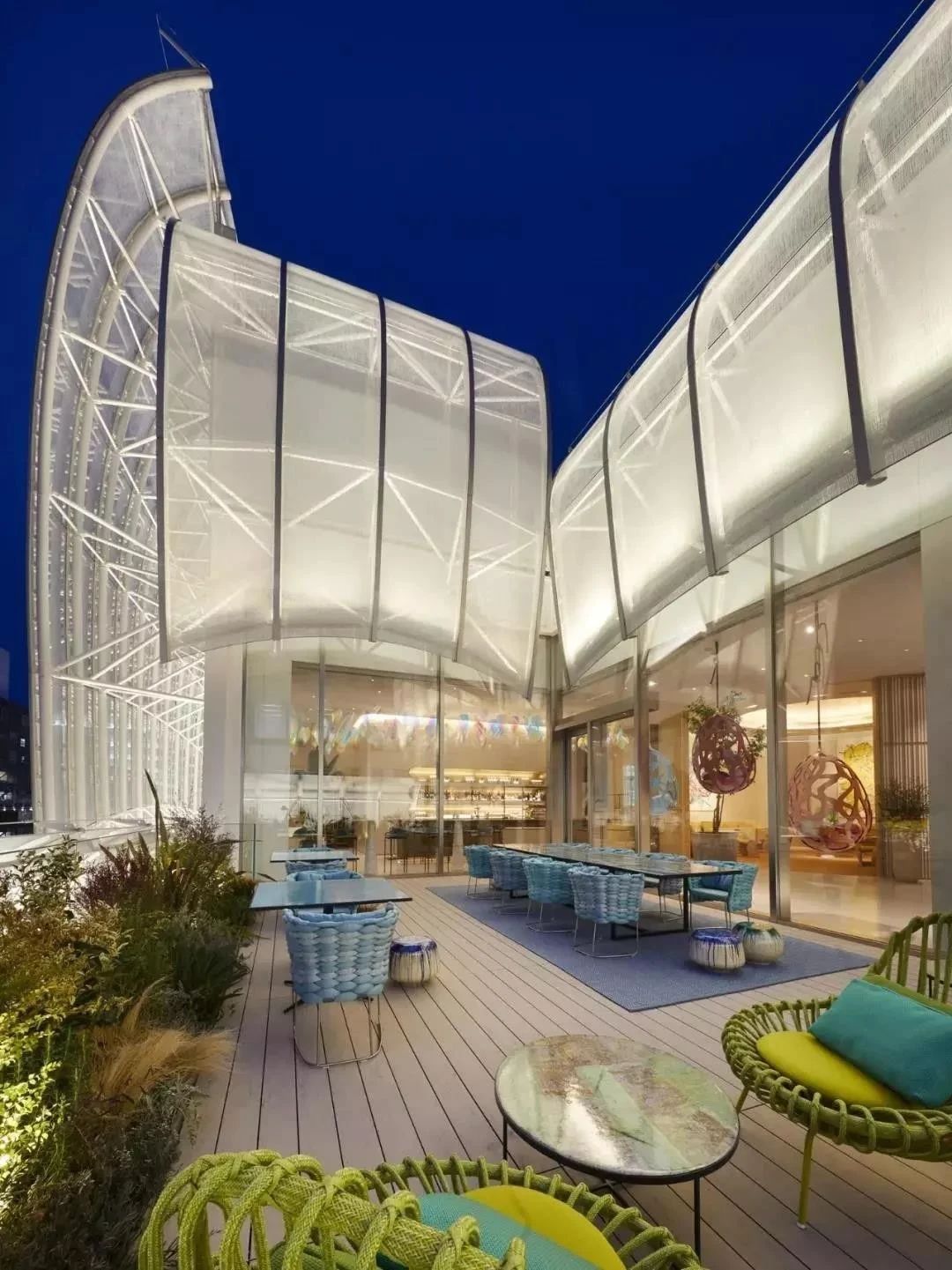Colored glazed glass is a decorative glass product made by printing inorganic glaze (also known as ink) onto the surface of the glass, and then subjecting it to high-temperature tempering treatment at 700 degrees Celsius. The glaze is permanently sintered onto the surface of the glass to obtain a wear-resistant material.
The glaze used in colored glass is generally inorganic colorants and low melting point glass. During the tempering and sintering process, the glaze melts on the surface of the glass, making it color stable, not easy to fade, and the glaze layer firm and not easy to fall off, which can achieve the same lifespan as the building.
Colored glazed glass can also undergo composite processing such as coating, interlayer, and synthetic hollow, in order to obtain special properties for other purposes. Therefore, it is widely used in the construction and decoration industry; Furniture glass, electronic glass, etc. often use colored glaze technology.
High temperature glaze, low temperature glaze, silk screen printing
Glazed glass generally refers to high-temperature glazed glass. After printing the glaze, it needs to be sintered on the surface of the glass at a temperature of 600-700 ℃. And low-temperature glaze, also known as low-temperature ink, is a product that prints low-temperature ink onto the surface of glass and dries it, with a drying temperature generally not exceeding 200 ℃.
High temperature colored glaze printing ink is made by blending oil-based solvents and alkyd resins. The firing process in the furnace involves several stages:
Phase 1: Preheat from room temperature to 120 ℃, with no change in ink printing;
Phase 2: Evaporation gasification of light oil from 120 ° C to 250 ° C;
The third stage: from 250 ° C to 500 ° C, heavy oil and resin are burned and gasified;
Stage 4: From 500 ° C to 580 ° C, the glass powder in the colored glaze begins to melt, while the surface of the printed glass also slightly softens;
Stage 5: From 580 ° C to 620 ° C, the glass glaze powder is completely melted, and the pigment powder is also melted into it. At this time, the surface of the glass body is completely softened, and the colored glaze is combined with the glass to complete the transfer and sintering of the glaze color, and then slowly dropped to room temperature.
Low temperature glaze, as it does not require high temperatures, can use some organic pigments in its pigments, resulting in richer colors and greater selectivity. However, the adhesion between low-temperature glaze and glass is worse than that of high-temperature glaze, and most of them can be removed with nails. At the same time, the color durability is not as good as high-temperature glaze. It is commonly used in household appliances and electronic glass.
Screen printing refers to the method of printing glaze onto glass, and both high-temperature and low-temperature glazes can use screen printing technology. Compared to roller printing, silk screen printing generally only prints regular and uniform patterns on the full plate, as shown in the figure.
Oil based glaze, water-based glaze, lead-free glaze
In the past, the glazes used for colored glazed glass were all oil-based glazes, meaning that pigments needed to be mixed with oil-based solvents and alkyd resins before printing. Therefore, VOC (volatile organic compounds) are generated in the production of colored glazed glass, which has a certain impact on operators and the environment.
In recent years, water-based glazes have emerged, replacing oily solvents and alkyd resins with water, making the production process of colored glazed glass healthier and more environmentally friendly. However, due to the significantly poorer diffusion and adhesion of water as a solvent compared to oil, higher production process requirements are required.
The emergence of lead-free glaze is also a requirement for health and environmental protection. In the early years, many glazes often added lead glass or other lead containing materials to reduce the melting point of the glaze and increase color saturation. In recent years, with the deepening of environmental protection concepts, many glaze manufacturers have launched lead-free glazes, whose performance is basically similar to that of lead-containing glazes.
Colored glaze patterns and visual illusions
Colored glazed glass for construction generally uses regular geometric patterns such as dots and lines. These well-designed patterns can showcase a simple and elegant style in architecture and space. But it is monotonous, boring, and lacks a sense of design. More and more personalized buildings, traditional glazed glass can no longer meet the needs of design and functionality.
Digital colored glazed glass
Therefore, Dip Tech digital glaze technology has emerged, which is currently the world’s leading glass digital ceramic printing technology. Combining the durability of ceramic ink and the diversity of digital printing, it can achieve any pattern, color, and never fade.
Digital glazed glass technology uses digital printing to eliminate mechanical screen printing and directly print inorganic high-temperature ink onto glass. After tempering, it has unparalleled acid and alkali resistance, corrosion resistance, and weather resistance. Its features: no need for plate making, instant error correction, variable printing, and on-demand printing. Digital printing is a comprehensive technology developed on the basis of printing technology, which uses electronic text as a carrier and transmits it to digital printing equipment through the network to achieve direct printing. Its printing accuracy can reach 2440DPI
Characteristics of Digital Colored Glazed Glass
–Easy to implement
Any pattern, design, and unlimited color, precise printing, achieving realistic and realistic patterns
–Persistence and precision
Ink dissolves into glass, providing unparalleled scratch resistance, acid resistance, UV resistance, and weather resistance. Accurate printing, achieving realistic images and graphics
–A brand new medium for artistic expression
By arbitrarily combining transparency, translucency, opacity, color, and shading, create a double-sided visual design on both the front and back sides, transforming glass digital printing into a tool for expressing design art
Inaddition, the trend of using digital glazed glass in indoor (partitions, background walls, floors, shower doors, etc.), home appliances, furniture, and the automotive industry is also becoming increasingly popular. The powerful digital ceramic ink can control light scattering, light transmittance, achieve different energy efficiency, light control, temperature control, privacy level, and provide anti stick performance for the automotive industry.
Especially in terms of energy-saving indicators for curtain wall glass, digital glazed glass can help designers achieve a certain heat transfer coefficient K or U value, as well as a shading coefficient SC (the ability of glass to block or resist solar energy, abbreviated as SC).
Nowadays, the function, cost-effectiveness, and added value of functional decorative glass have far surpassed traditional glazed glass.
If you want to consult our products, welcome to ask price, sent email to
us: lemsun002@126.com.
Post time: Jun-17-2024
